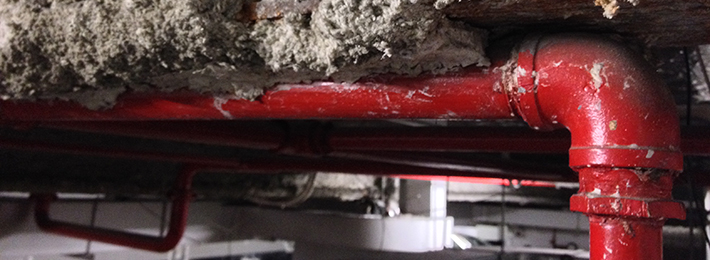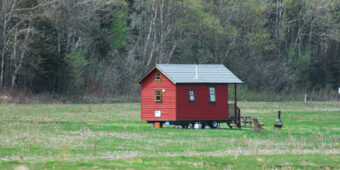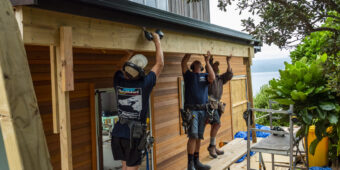Hidden killer
07 Apr 2017, Featured, Prove Your Know How, Safety

Asbestos is New Zealand’s number one killer in the workplace and is responsible for approximately 170 fatalities a year. As part of the recent Health and Safety at Work Act, the regulations for working with asbestos changed – Site Safe has put together some quick tips on what you need to know
Breathing in airborne asbestos fibres is a serious health risk. Once the fibres enter a person’s system, they lodge in the lungs and may cause diseases like asbestosis, lung cancer and mesothelioma.
These hazardous fibres are released when asbestos-containing material (ACM) is disturbed and, if you don’t take the right precautions to protect yourself, you could be risking your life and your livelihood.
Tradespeople at high risk
WorkSafe New Zealand’s 2013 report Asbestos and other Occupational Lung Diseases in New Zealand showed that the National Asbestos Medical Panel was notified of 1,366 cases of Asbestos-related illnesses between March 1992 and July 2013.
The report also found that, by occupation, carpenters, electricians and plumbers combined to account for 67% of all cases. That’s because, until the mid-1980s, asbestos was often used as a fire retardant and for insulation. It can often be found in places such as:
- Sprayed-on fireproofing.
- Soundproofing.
- Thermal insulation.
- Decorative coatings.
- Floor coverings, such as vinyl.
- Cement products, roofing sheets.
- Lagging around pipes.
If you have any suspicions that asbestos is present, ask an asbestos surveyor to conduct a survey. If asbestos is found, you should bring in a licensed professional.
If you do uncover or damage materials that may contain asbestos:
- Stop the work immediately.
- Keep people away.
- Minimise the spread of contamination to other areas.
- Get advice on what to do next from a professional.
New rules
In April last year, a licensing system for the removal of asbestos was introduced by WorkSafe. There are two types of licences, Class A and B, which determine the type and amount of asbestos that you can remove.
Class A holders can remove:
- Friable asbestos or ACM (asbestos containing material).
- Asbestos-contaminated dust or debris (ACD).
- Non-friable asbestos or ACM.
Class B holders can remove:
- Non-friable asbestos or ACM.
- ACD associated with removing non-friable asbestos or ACM.
However, a competent person without a licence can remove:
- 10m² or less of non-friable asbestos or ACM and the associated ACD cumulatively over a project’s life.
- Minor amounts of ACD, not associated with the removal of friable or non-friable asbestos.
Supervision
Licence holders can nominate supervisors on their WorkSafe licence to supervise workers. A licence must have at least one nominated supervisor. There is no limit on the number of supervisors, provided they meet the criteria.
Supervisors must be aged 18 or over, have a level of experience relevant to the class of licence, be present at the removal area when Class A work is carried out, and in the vicinity and readily available whenever Class B work is being carried out, and be suitably qualified as per WorkSafe requirements.
However, supervisors must have completed the correct training by the end of the April 4, 2018 transition period.
From April 4, 2018, assessors will be required to provide air quality monitoring and clearance certificates for Class A removals.
Notifications of licensed asbestos removal should now be made to WorkSafe five days before work starts.
Current certificate holders can continue to operate until the certificate expires, or until April 4, 2018 – whichever is earlier. If you’re removing friable asbestos or more than 10m² of non-friable, you must apply for a licence, which will be granted with conditions.
More info
Last November, WorkSafe introduced a new Approved Code of Practice for the Management and Removal of Asbestos.
To download the code, or to learn more about basic asbestos risks on Site Safe’s Passport Plus – Worker Health course or Site Safe’s Passport Plus – Flexi (Online + Classroom) course, go to www.sitesafe.org.nz.
Register to earn LBP Points Sign in
2 Comments
Leave a Reply
You must be logged in to post a comment.




Nice quiz
done